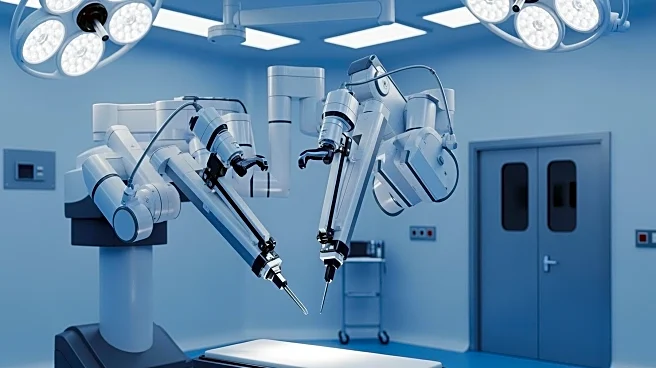What's Happening?
Recent studies have evaluated the use of machine learning (ML) models and rule-based classification algorithms for the surveillance of surgical site infections (SSI). These models aim to reduce the manual
workload involved in infection surveillance, allowing healthcare professionals to focus more on preventive measures. The findings indicate that while rule-based algorithms offer higher sensitivity, ML models excel in terms of accuracy and workload reduction. The trade-off between these factors is crucial for selecting the appropriate surveillance methodology. The study highlights the growing interest in digitizing healthcare-associated infection surveillance, particularly for SSIs, due to the rarity of these events and the large number of records required for screening.
Why It's Important?
The implementation of ML models in SSI surveillance has significant implications for healthcare efficiency and patient safety. By reducing the manual workload, healthcare professionals can allocate more time to preventive actions, potentially decreasing the incidence of infections. This advancement in surveillance technology could lead to improved patient outcomes and reduced healthcare costs. However, the choice between ML models and rule-based algorithms must consider the balance between sensitivity and operational efficiency, as each approach offers distinct advantages. The integration of these technologies into healthcare systems could revolutionize infection control practices, making them more effective and resource-efficient.
What's Next?
Future research is expected to focus on external validation of these models, hybrid approaches that integrate ML and rule-based algorithms, and the exploration of sequence-based models like transformers as time-resolved datasets become available. The feasibility of real-world implementation will also be assessed, aiming to optimize automated surveillance systems. These developments could further enhance the accuracy and efficiency of SSI detection, ultimately contributing to better healthcare outcomes.
Beyond the Headlines
The ethical and practical implications of relying on automated systems for infection surveillance are significant. While these technologies promise increased efficiency, they also raise questions about data privacy, the potential for algorithmic bias, and the need for human oversight. Ensuring that these systems are transparent and interpretable is crucial for their acceptance and effectiveness in clinical settings.











